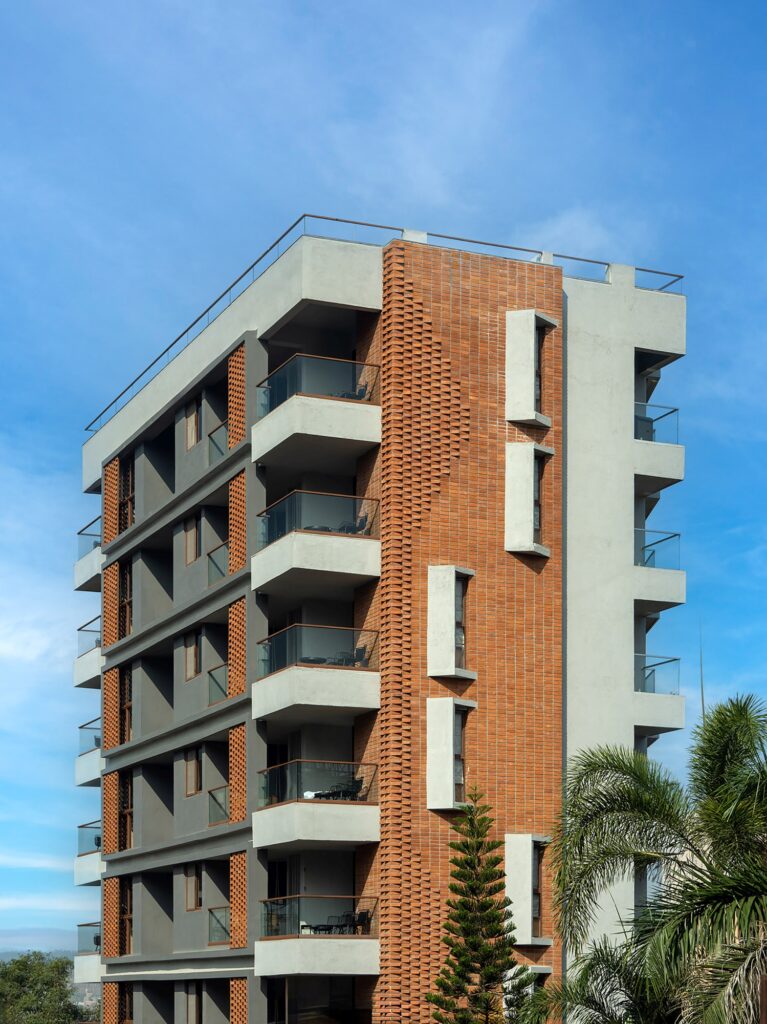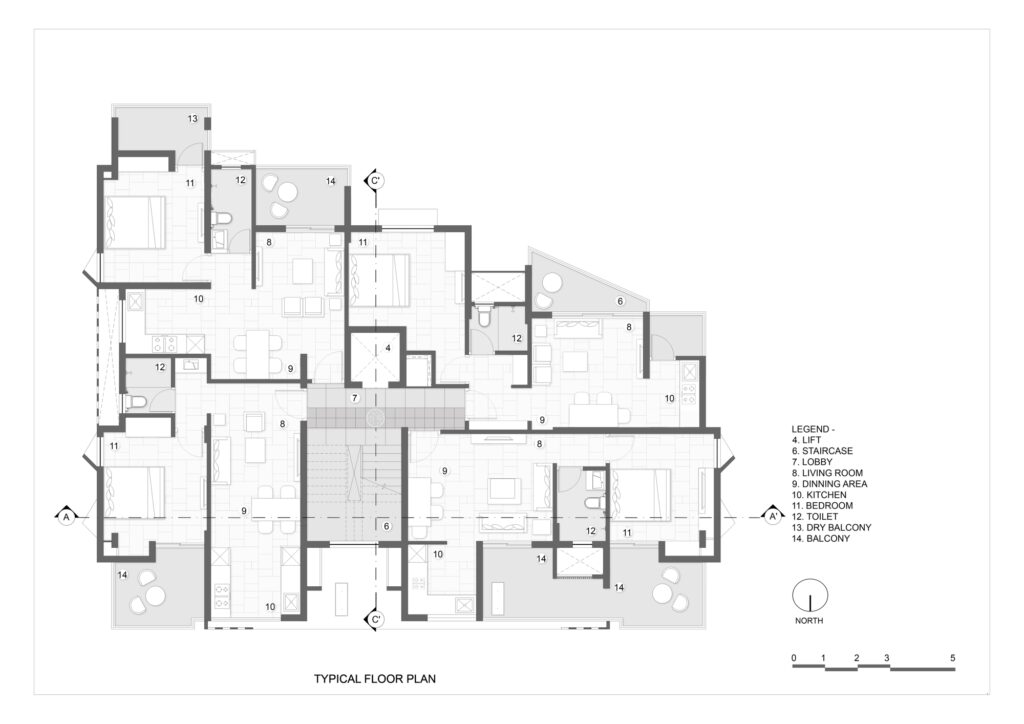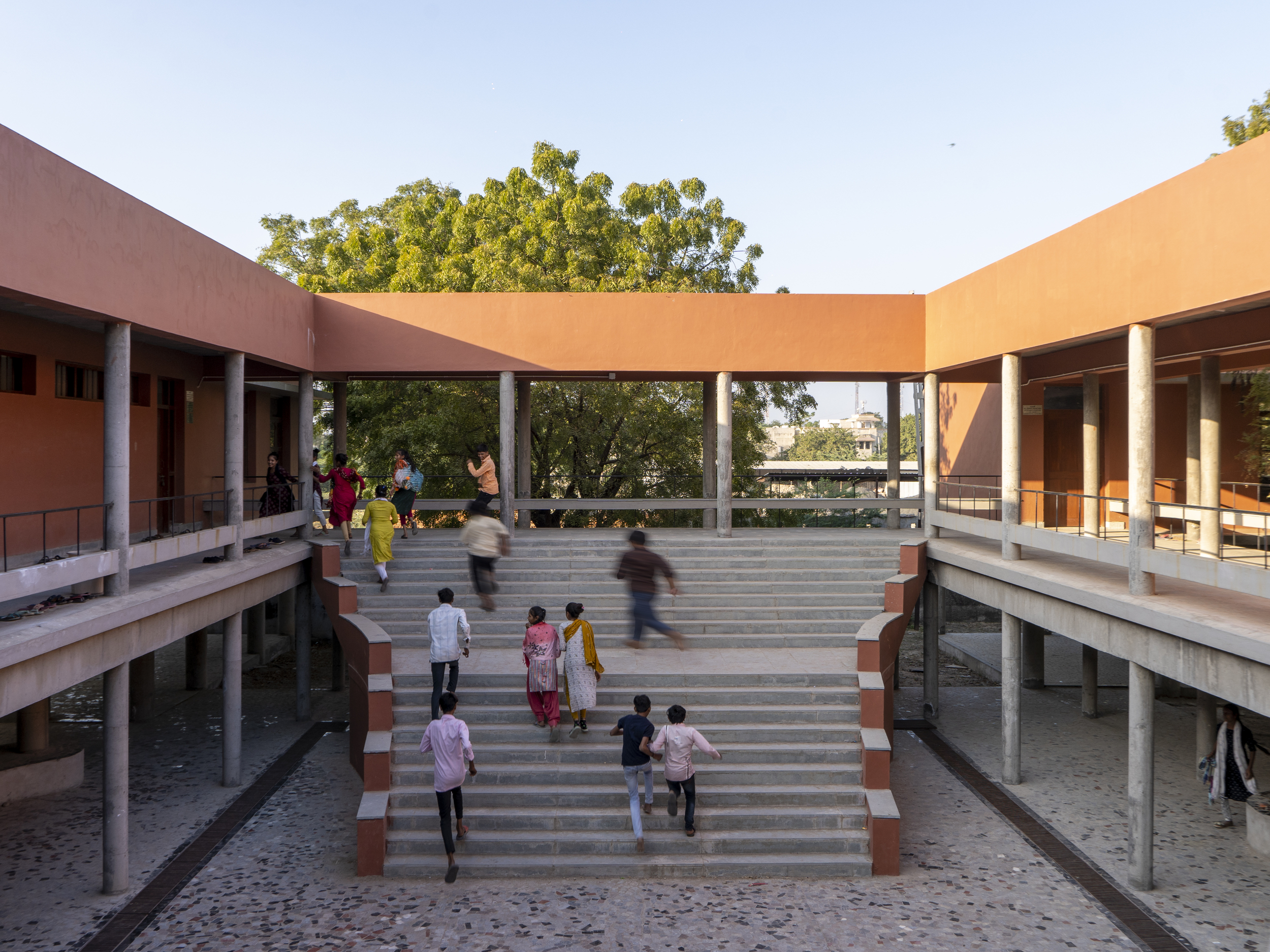
Client Brief
The client wished to build service apartments on a 465 sq.m. Prioritizing sustainability, our client was keen on utilizing rustic, locally sourced materials. The compact plot necessitates optimal space utilization, a key consideration. Flexibility was crucial, as the client wanted to have the open option to convert the space into single-bedroom apartments for potential resale, should the service apartment concept prove unviable.



The design challenge lies in seamlessly integrating cultural values, sustainability, and adaptability, creating a harmonious and flexible living space that aligns with the client’s vision.
Concept Note
Tattva is a project which embodies a profound connection between humanity and the built environment, drawing inspiration from the ancient Indian language Sanskrit, where it signifies “principle” or “reality.” Rooted in Hindu philosophy, Tattva integrates two Sanskrit elements: “Tatt,” denoting “quality” or “godhead,” and “tvam,” representing “thou” or “individual.”
Embracing various schools of thought, the project focuses on the fundamental tattvas—earth, water, fire, air, and wood—augmented by adding metal, each possessing unique symbols, colours, and corresponding chakras in the human body.



The icons representing these elements reflect a synthesis of Indian and Viking philosophies, harmonizing diverse cultural perspectives into a cohesive design that transcends boundaries and enriches the essence of the human experience. Tattva, thus, emerges as a testament to the universal interconnectedness of humanity and the environment.
Design Process
- The strategic planning for this 465 sqm. plot, chamfered towards the North East, required planning flexibility with a priority on maximizing desirable spaces, and the emphasis was placed on creating predominantly rectangular layouts. This approach sought to optimize functionality while ensuring adaptability to potential design variations.

- The service apartment project provides its guests not only with a stay experience but also with services like leisure spaces, activity areas, rooftop cafeterias and dining spaces with an ample number of open balconies and parking services. It is a spatially intelligent architectural design which maximizes the scale of the project through visual illusion.
- Sustainable and natural materials are used to create a fusion of light and shadow effects through interesting Jaali work on the facades.



- Each floor corresponds to its own unique element which symbolizes its own tattva for which it stands.
- Unique parametric brick detailing complements the design language with its philosophy.



- Materials such as lightweight AEC blocks, fly ash and blended cement have been used in the overall construction.
- Angular windows have been oriented to capitalize on the morning sunlight as well as the views. Insulated blocks provide heat reduction on the south and west walls as well as noise reduction.
- Natural Kotah stone flooring in different finishes engraved with corresponding symbols has been used in the flooring and lime plaster has been used for the walls.
- Pockets of green have been added to complement the design and add an indoor-outdoor connection.



Tattva is a project that unites elements to establish a profound connection between humanity and the built environment.
Drawings and Details
Project Name: Tattva (Residential building) Service apartments
Project Location: Pune, India
Carpet Area: 18,000 sqft
Plot area: 5,000 sqft
Design team: Suhani lal Sanghra (Principal architect); Azeem Siddiqui (Senior interior designer)
Firm name: Sparc Design
Photography: Hemant A Patil













